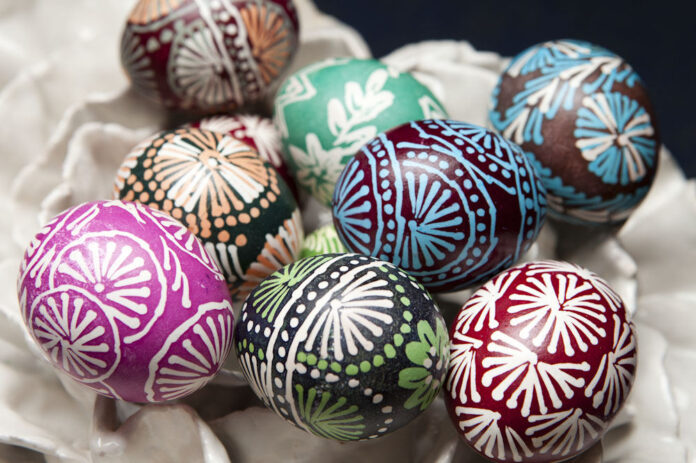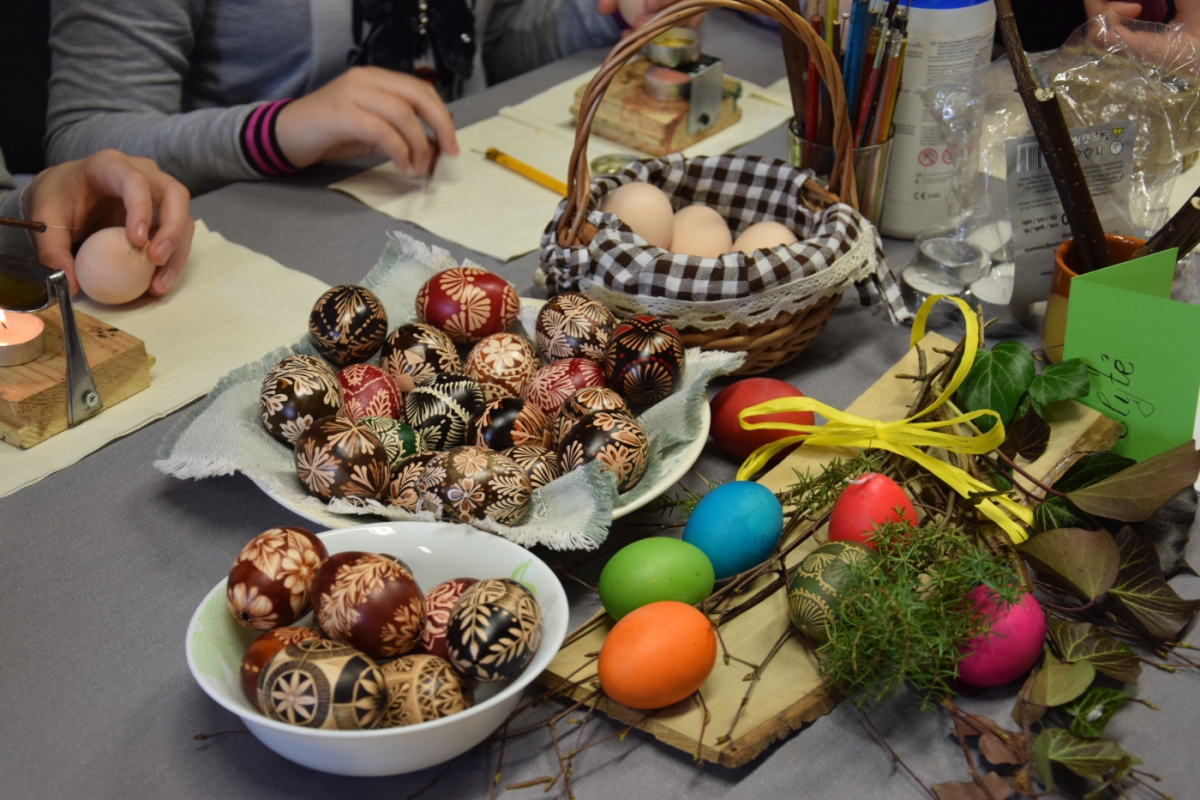
Easter eggs and their popularity throughout the world are rooted in ancient symbolism, with the egg regarded as the source of life and the promise of spring. In Lithuanian folk art, Easter eggs, known as margučiai (literally “multicoloured eggs”), are the last vestige of our ancient pagan past according to art historian Petras Galaunė. In his book on Lithuanian Folk Art first published in 1930, he notes that “margučiai” are known in Lithuania as well as most Slavic countries, from which Lithuanians may have adapted the art (they are not known in Latvia, for example).
Primitive peoples associated the egg with a variety of natural phenomena, and various religions ascribed mystical powers to the coloured egg, wrote Antanas Tamošaitis, and the myths or superstitions symbolized by the egg were known and recorded by the Egyptians, Greeks, Persians, Chinese and other highly cultured nations. The myth of the Easter egg predates Christianity and, first mentioned in written sources in 1549, has been closely linked to the social and religious life of Lithuanian peasants.
In folklore, “margučiai” are connected to the creation of the world and the beginning of a new year as celebrated by our ancestors, who linked the spring equinox to a new season of life and growth.
 The egg was believed to be a charm offering protection against evil spirits, accidents, sickness, death and any other misfortune. The symbolism of the power of the egg evolved from its “magical” transformation from an inanimate object to a living being. The decorating of the egg was meant to emphasize or strengthen its life-generating potential.
The egg was believed to be a charm offering protection against evil spirits, accidents, sickness, death and any other misfortune. The symbolism of the power of the egg evolved from its “magical” transformation from an inanimate object to a living being. The decorating of the egg was meant to emphasize or strengthen its life-generating potential.
Red was believed to protect from evil spirits. The motif or pattern on the Easter egg symbolized the sun, moon, stars, love, devotion, faith and so on. In his seminal work on Lithuanian Easter eggs, Tamošaitis also writes about the symbolism, ingenuity of pattern, and subtlety of colour that render Easter eggs individual works of art.
Interpretation of the symbols and colours used to decorate eggs remains highly speculative, and may vary by region, but of course some of them are traditional. Aside from being eaten, they were used in games and gifted to friends and loved ones. “Margučiai” were left for children by “Velykė” – Easter Granny, whose helpers were bunnies who painted the eggs. Children also went to visit neighbours, and godparents in particular, who would have eggs for them. If they were not allowed inside or weren’t given eggs, the children (and in some areas, a group of costumed youth) could curse the homeowners’ chickens.
Tamošaitis lists various materials that were traditionally used to dye eggs in Lithuania. We have all heard of onion skins used for yellow and brown tones. For yellow colours, caraway seeds, apple peels, hay, gorse, camomile, lichens or wild apple leaves were also used. Hazelnut shells, coffee grounds, tea, sage, plum tree bark and rusty iron produced brown tones. Birch leaves, mint, nettle, rue, spinach, moss, parsley and sage were used for green tones. Red colour came from cranberries, red bilberries, cherries, or pickled beet juice, while carrot juice provided orange tones. Pink or mauve came from beets or radish peels; blue from cornflower blossoms, blueberries or blue plums; violet from sunflower seeds, juniper berries, or beet juice.
Today our Easter eggs can be coloured with simple, store-bought colours, or, with a bit of patience and experimentation – the old-fashioned way, using berries, vegetables and other natural ingredients. For illustrations, recipes and ideas, see the Easter egg section on the website ltfai.org.





























